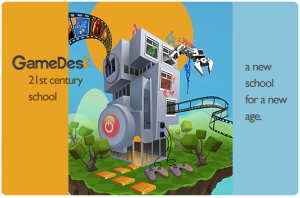My learning philosophy from 10 weeks ago hasn’t changed much. I chose to begin my video with a quote from Williams Butler Yeats, which also happens to be the first thing I wrote in my Personal Learning Philosophy v1. “Education is not the filling of a pail, but the lighting of a fire.” This idea is extremely important to me and resonates with me on many levels. I mentioned before that my early educational experiences were mainly “filling of a pail”. Pretty boring. It almost feels like a chore. “Son, go and fetch some water!” No thanks. But when that switch turned, and I became excited about learning, something sparked inside of me. From that moment on, I was all about feeding my fire of learning. I started with this because it takes passion and excitement to get to this point where learning becomes fuel to your fire. When you can infuse excitement, passion, and relevancy into education, that is how you create engagement in learners.
I would have to say that my ideas around learning and education are in perfect alignment with John Seely Brown’s “The Global One-Room Schoolhouse” Vimeo video from his “Entrepreneurial Learner” keynote at DML2012. He talks about play as a “kind of a permission to fail, fail, fail, again and get it right.” I feel that this is incredibly important to give students a permission to fail, to give them an environment where they feel safe to question the status quo or even the teacher’s expertise. He later says in the video that “the key part of play is a space of safety and permission.” Brown also talks about epiphanies.
If we can create one epiphany for one child, that epiphany lasts for life for that kid. Brilliant teachers are brilliant in being able to create epiphanies for kids. How do we think about that? And how do we use play as a way to amplify the chance for that to happen.
What if every teacher’s goal was to create an epiphany for each one of their students? Maybe some teachers do strive for this. But I’m willing to be that this isn’t even on the radar of the majority of teachers. I want to cover two last quotes from Brown in his video:
In a world of constant change, if you don’t feel comfortable tinkering, you’re going to feel an amazing state of anxiety.
I love this idea because it’s so true. Everything around us is in a constant state of flux, and if you can’t adapt and be able to tinker with new technologies, it’s going to be a tough world. If we are teaching our students to tinker, to play, to be curious, we are teaching them to adapt to change. I wrote about the PlayMaker School in LA in a recent post. This is a great school that is really pushing the boundaries of what education is and how kids learn. If you haven’t heard about it, check it out!
And to close, Brown’s idea of taking the one-room schoolhouse idea of yesterday and mixing it with today’s classroom and technology to get the “global one-room schoolhouse” where “the teacher [isn’t] transferring knowledge, but the teacher [will act] as a coach, a will turn around and also teach the younger younger kids.” This is how the one-room schoolhouse operated. Why couldn’t we have a global one-room schoolhouse today? With social media and web 2.0 tools, this is absolutely feasible.
What will tomorrow’s classroom look like? How will it operate? What if tomorrow’s classroom partnered with a classroom from the other side of the world, every day? Now that would be cool.



